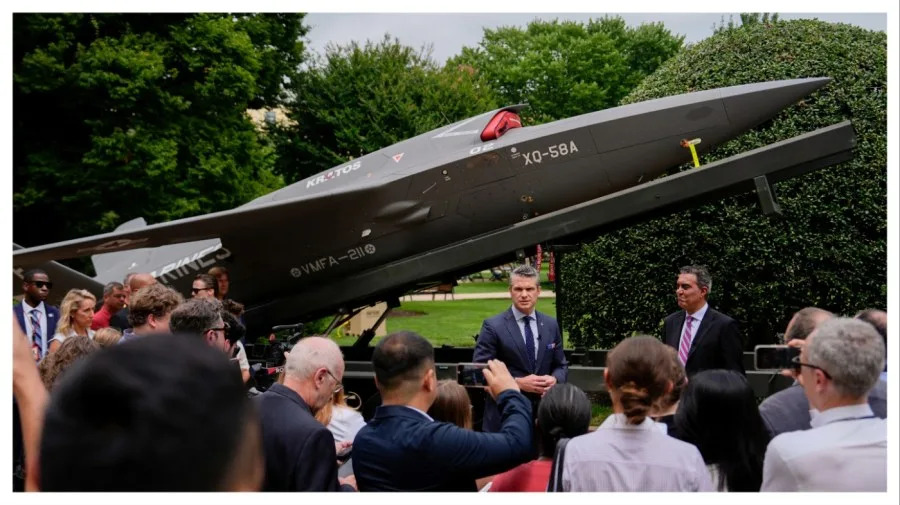
The Trump administration is taking a page out of Ukraine’s playbook when it comes to drone warfare, according to the Pentagon’s chief technology officer.
Emil Michael, the under secretary of Defense for research and engineering, said Russia’s more than three-year invasion of Ukraine has shown the new trajectory of warfare, one that the U.S. and the rest of the world is learning from.
“When you see Ukraine and Russia, that’s more likely that sort of trajectory of warfare where the front lines are not humans and tanks; the front lines are machines and robots figuring out how to counter each other. And that’s a big lesson,” he told NewsNation’s Mills Hayes.
Michael was speaking from Indiana during the Technology Readiness Experimentation (TREX) event — a days-long demonstration of new, cutting-edge military technology in which defense companies and engineers test prototypes of war technology in front of U.S. military leaders.
The Trump administration is using such events to figure out how to quickly equip troops with small, easily replaced drones, an action it struggles with compared to the likes of adversaries including China, Russia and Iran.
While the United States has mastered the development of large, complex and expensive unmanned aircraft such as the Predator and Reaper, its industrial base has struggled to keep up on producing the smaller, inexpensive drones that have come to define the conflicts in Ukraine and Middle East.
But Michael said the Pentagon has learned a few things from the Russia-Ukraine war, including that it’s the warfighters as much as defense companies that will need to be part of what he calls “the innovation loop,” or adjusting drone technology to fit the current conflict.
“These drones are changing in capabilities every three-to-four weeks, which is staggering, right?” said Michael, referring to Ukraine’s development of new drone types and tactics in the war, including swarm capabilities — forcing both sides to develop countermeasures and adapt their strategies.
“The warfighters, the people who are actually operating these drones are the ones who are actually improving them. They’re in some cases writing software. They’re saying, ‘well, what if we do this?’ And they’re doing the experimentation at the very lowest level of the warfighter,” he said. “That’s a totally new way of thinking.”
The on-the-ground spontaneity is a departure from the typical route of a large weapons system being delivered to U.S. troops, who are trained on how to use them ahead of time.
“Now we’re going to rely on the warfighters to be part of the innovation loop. And that’s what the war in Ukraine and Russia taught us,” Michael said.
Drones are the new front line of modern conflicts, featuring prominently in Russia’s war in Ukraine and Israel’s conflicts in the Middle East.
That was on full display in June with Ukraine’s Operation Spiderweb. In that operation, Kyiv for months smuggled hundreds of small drones deep inside Russia for a coordinated strike that destroyed upward of 40 Russian warplanes on five airbases across the country.
Drones also make up for a large amount of casualties in Russia’s strikes on Ukrainian cities and have only grown in intensity since earlier this year.
Copyright 2025 Nexstar Media, Inc. All rights reserved. This material may not be published, broadcast, rewritten, or redistributed.
For the latest news, weather, sports, and streaming video, head to The Hill.







Comments